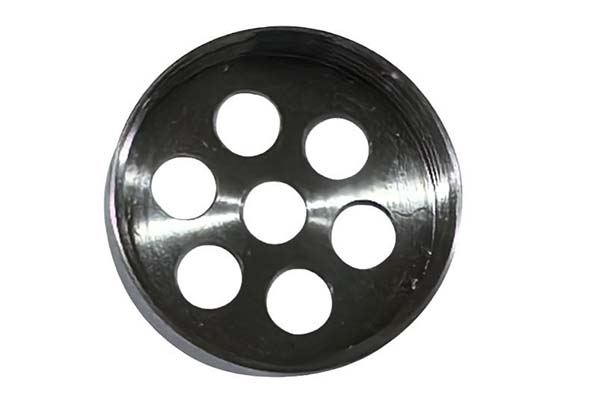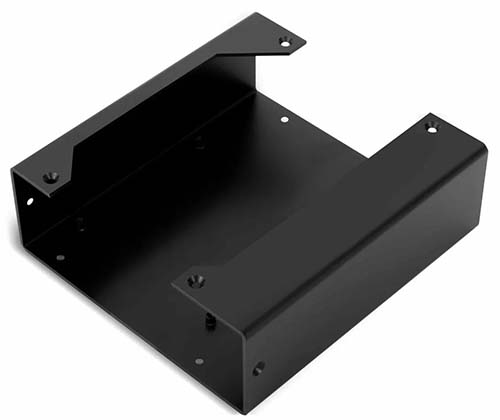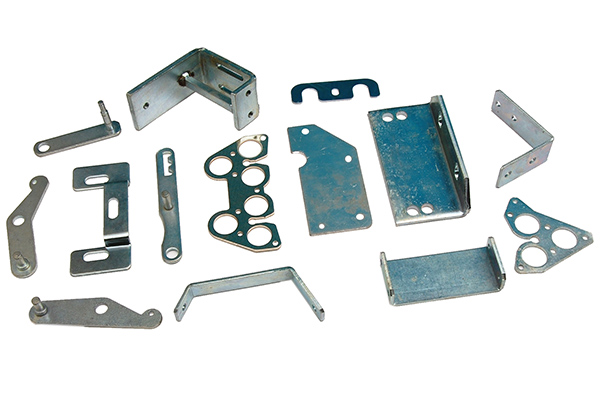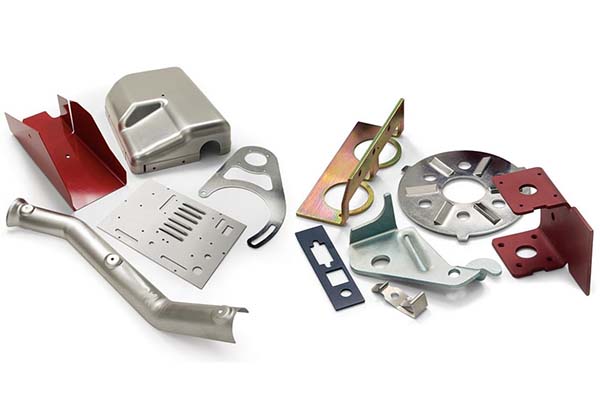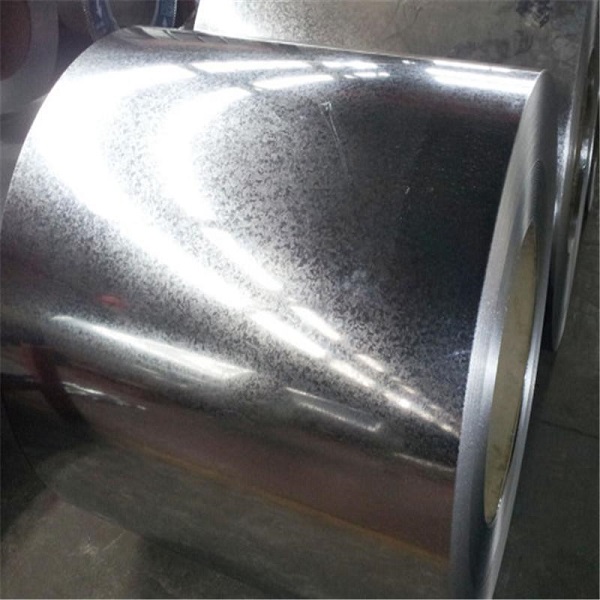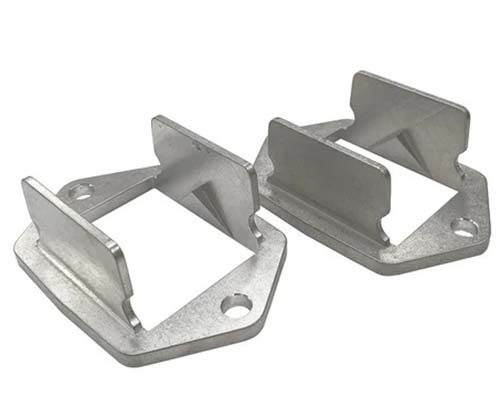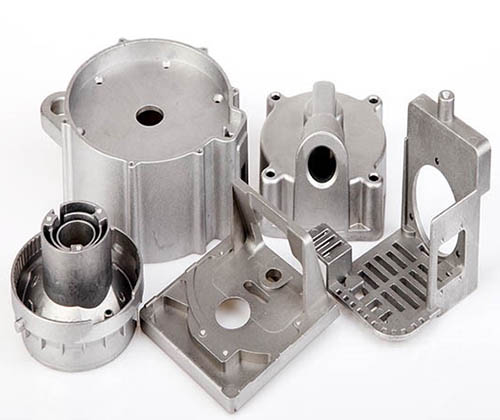Selecting the right sheet metal for a project can be overwhelming, given the wide variety of materials available, each with its own unique properties, manufacturing requirements, and application suitability. Whether you're working on an automotive part, a construction component, or an electronic device, choosing the wrong metal can lead to performance issues, increased costs, and project delays. In this guide, we'll break down the key aspects of sheet metal metals, helping you navigate through the options to make the best choice for your specific needs.
Material Types of Sheet Metal
Sheet metal comes in a diverse range of materials, each with distinct characteristics that make them suitable for different applications. Here are some of the most common types:
Aluminum and Aluminum Alloys
- Aluminum: Known for its lightweight nature, aluminum has a density of about 2.7 g/cm³, making it ideal for applications where weight is a concern, such as in the aerospace and automotive industries. It also offers good corrosion resistance, especially when exposed to the atmosphere.
- Aluminum Alloys: By combining aluminum with other elements like copper, magnesium, and zinc, aluminum alloys are created to enhance specific properties. For example, some alloys have improved strength, making them suitable for structural components in construction.
Steel and Stainless Steel
- Steel: A versatile material, steel is an alloy of iron and carbon. It is known for its high strength, with tensile strengths ranging from 300 to 2000 MPa depending on the type. Steel is widely used in construction, industrial machinery, and automotive applications due to its durability and affordability.
- Stainless Steel: Stainless steel contains chromium, which forms a protective oxide layer, giving it excellent corrosion resistance. This makes it suitable for food processing equipment, medical devices, and marine applications where hygiene and resistance to harsh environments are important.
Copper, Brass, and Bronze
- Copper: Copper is valued for its high electrical and thermal conductivity. It is commonly used in electronics and electrical components. It also has good corrosion resistance and is often used in plumbing systems.
- Brass: An alloy of copper and zinc, brass offers good machinability and corrosion resistance. It is used in musical instruments, plumbing fixtures, and ornamental purposes.
- Bronze: An alloy of copper and tin, bronze is known for its strength, corrosion resistance, and wear resistance. It is used in industrial machinery bearings and artistic applications.
Other Metals and Alloys
- Titanium: Titanium has a high strength - to - weight ratio and excellent corrosion resistance, even in marine environments. It is used in aerospace, medical devices, and high - performance automotive components, though it is more expensive than many other metals.
- Galvanized Steel: Galvanized steel is steel coated with zinc to enhance its corrosion resistance. It is commonly used in construction for roofing and fencing.
- Magnesium Alloys: Magnesium alloys are even lighter than aluminum alloys, making them suitable for aerospace and automotive applications where weight reduction is critical. However, they are more prone to corrosion.
- Nickel Alloys: Nickel alloys offer excellent high - temperature resistance and corrosion resistance, making them suitable for use in chemical processing and aerospace applications.
- Zinc Alloys: Zinc alloys have good castability and are often used in electronics and automotive parts for their decorative and functional properties.
Material Properties of Sheet Metal
Understanding the properties of sheet metal is essential for selecting the right material for a project. Here are some key properties to consider:
Mechanical Properties
- Strength: Strength refers to a material's ability to withstand applied forces without breaking. Tensile strength is the maximum stress a material can withstand before failing in tension. For example, steel has high tensile strength, making it suitable for structural applications.
- Ductility: Ductility is the ability of a material to be stretched or deformed without breaking. Materials like copper and aluminum are highly ductile, allowing them to be formed into various shapes through processes like bending and deep drawing.
- Hardness: Hardness is a material's resistance to indentation or scratching. Stainless steel is harder than aluminum, making it more resistant to wear.
- Impact Resistance: Impact resistance is the ability to withstand sudden shocks or blows. Materials with good impact resistance, such as certain steel alloys, are suitable for applications where they may be subjected to collisions, like automotive bumpers.
- Fatigue Resistance: Fatigue resistance is the ability to withstand repeated loading and unloading without failing. This is important for industrial machinery components that are subjected to cyclic stresses.
Physical and Chemical Properties
- Density: Density affects the weight of a component. Lightweight materials like aluminum and magnesium alloys are preferred in applications where weight is a concern.
- Thermal Conductivity: Thermal conductivity is the ability to conduct heat. Copper and aluminum have high thermal conductivity, making them suitable for heat sinks in electronics and HVAC systems.
- Electrical Conductivity: Electrical conductivity is the ability to conduct electricity. Copper is one of the best conductors, making it ideal for electrical components and wiring.
- Corrosion Resistance: Corrosion resistance is the ability to resist degradation due to chemical reactions with the environment. Stainless steel and titanium have excellent corrosion resistance, while steel is more prone to rusting unless protected.
- Oxidation Resistance: Oxidation resistance is the ability to resist reaction with oxygen. Materials with good oxidation resistance, such as nickel alloys, are suitable for high - temperature applications.
- Magnetic Properties: Some materials, like steel, are magnetic, while others, like aluminum and copper, are non - magnetic. This property is important in applications where magnetic interference needs to be avoided, such as in certain electronics.
- Recyclability: Many sheet metals, including aluminum, steel, and copper, are highly recyclable. Recycling not only reduces waste but also conserves energy and natural resources.
Manufacturing Processes for Sheet Metal
A variety of manufacturing processes are used to shape and form sheet metal into the desired components.
Forming and Shaping Processes
- Rolling: Rolling is used to reduce the thickness of sheet metal and achieve a uniform thickness. It can be done hot or cold, with cold rolling producing a smoother surface and higher strength.
- Bending: Bending is used to create angles and curves in sheet metal. It is commonly used in construction for forming structural components and in automotive for making brackets.
- Deep Drawing: Deep drawing is used to form cup - shaped or hollow components from sheet metal. It is widely used in the production of automotive parts like fuel tanks and home appliances like pots and pans.
- Stamping: Stamping involves using a die to cut or form sheet metal into specific shapes. It is a high - volume manufacturing process used in electronics and automotive production.
- Punching and Shearing: Punching creates holes in sheet metal, while shearing cuts straight lines. These processes are used in the production of various components, from electrical panels to construction brackets.
Cutting Processes
- Laser Cutting: Laser cutting uses a high - powered laser to cut through sheet metal with high precision. It is suitable for complex shapes and thin materials, making it popular in electronics and artistic applications.
- CNC Machining: CNC machining uses computer - controlled machines to cut and shape sheet metal with high accuracy. It is used for producing complex parts with tight tolerances in aerospace and industrial machinery.
- Grinding: Grinding is used to smooth the surface of sheet metal or to remove excess material. It is often used after other manufacturing processes to achieve the desired surface finish.
Joining and Heat Treatment Processes
- Welding: Welding is used to join two pieces of sheet metal together. Different welding methods, such as arc welding and laser welding, are used depending on the material and application.
- Annealing: Annealing is a heat treatment process that relieves internal stresses in sheet metal and improves its ductility. It is often used after cold working processes like rolling and stamping.
- Heat Treatment: Other heat treatment processes can be used to alter the properties of sheet metal, such as increasing its strength or hardness. For example, steel can be heat - treated to improve its tensile strength.
Surface Treatment and Finishing of Sheet Metal
Surface treatment and finishing not only enhance the appearance of sheet metal but also improve its performance and durability.
Anodizing and Plating
- Anodizing: Anodizing is an electrochemical process that forms a protective oxide layer on the surface of aluminum and its alloys. This layer improves corrosion resistance and allows for coloring, making it suitable for architectural components and consumer goods.
- Plating: Plating involves depositing a thin layer of another metal onto the surface of sheet metal. Common plating methods include chrome plating for a shiny finish and corrosion resistance, and nickel plating for improved wear resistance. Plating is used in automotive parts, jewelry, and electronics.
Coating and Painting
- Powder Coating: Powder coating is a dry finishing process where a powder is applied to the surface and then cured with heat, forming a hard, durable coating. It offers excellent corrosion resistance and a wide range of colors, making it suitable for automotive parts, furniture, and construction components.
- Painting: Painting provides a decorative finish and protects the sheet metal from corrosion. It is used in various applications, from home appliances to industrial machinery.
- Corrosion - Resistant Coatings: Specialized corrosion - resistant coatings are applied to sheet metal used in harsh environments, such as marine applications and chemical processing plants.
Polishing and Special Finishes
- Polishing: Polishing creates a smooth, shiny surface. Mirror finish is achieved through extensive polishing, making the metal reflective. This is used in ornamental purposes and automotive trim.
- Brushed Finish: A brushed finish creates a linear texture on the surface, giving it a modern look. It is used in architectural components and electronics.
- Chemical Conversion Coating: This process forms a thin layer on the surface of the metal, improving its adhesion to paints and coatings and enhancing corrosion resistance.
- Passivation: Passivation is used for stainless steel to remove free iron from the surface, enhancing its corrosion resistance.
- Heat Coloring: Heat coloring is a process that uses heat to create a range of colors on the surface of metals like titanium and brass, often used in artistic applications and jewelry.
- Protective Films: Protective films are applied to sheet metal during manufacturing and transportation to prevent scratches and damage.
Applications of Sheet Metal
Sheet metal is used in a wide range of industries due to its versatility and adaptability. Here are some common applications:
Automotive and Aerospace
- Automotive: Sheet metal is used extensively in automotive manufacturing for body panels, chassis components, and engine parts. Materials like steel and aluminum alloys are preferred for their strength and lightweight properties.
- Aerospace: In aerospace, sheet metal is used for aircraft bodies, wings, and engine components. Titanium and aluminum alloys are commonly used due to their high strength - to - weight ratios and corrosion resistance.
Construction and Industrial Machinery
- Construction: Sheet metal is used in construction for roofing, cladding, structural frames, and architectural components. Steel and aluminum are popular choices for their durability and strength.
- Industrial Machinery: Industrial machinery relies on sheet metal for frames, housings, and components. Steel is often used for its strength and wear resistance.
Electronics and Home Appliances
- Electronics: Sheet metal is used in electronics for enclosures, heat sinks, and electrical components. Aluminum and copper are used for their thermal and electrical conductivity.
- Home Appliances: Home appliances like refrigerators, washing machines, and ovens use sheet metal for their casings and internal components. Steel and stainless steel are preferred for their durability and ease of cleaning.
Other Applications
- Food Processing Equipment: Stainless steel is widely used in food processing equipment due to its corrosion resistance and ease of sanitization.
- Medical Devices: Sheet metal is used in medical devices such as surgical instruments and equipment housings, with stainless steel being a common choice for its biocompatibility.
- Marine Applications: Stainless steel and titanium are used in marine applications for their corrosion resistance to saltwater.
- Furniture and Ornamental Purposes: Sheet metal is used in furniture for frames and decorative elements, and for ornamental purposes in art and architecture.
- Jewelry and Musical Instruments: Copper, brass, and titanium are used in jewelry and musical instruments for their aesthetic appeal and unique properties.
- Telecommunications and HVAC: Sheet metal is used in telecommunications equipment and HVAC systems for enclosures and ductwork.
- Packaging: Thin sheet metal is used in packaging for cans and containers, often made from steel or aluminum.
Yigu Technology, a trusted parts custom manufacturing Supplier, excels in handling various sheet metal metals. We master diverse manufacturing processes and surface treatments, ensuring components meet strict standards across industries like automotive, aerospace, and electronics. Count on us for high - quality, custom sheet metal parts tailored to your needs.
FAQ
- Which sheet metal material is best for outdoor applications?
Stainless steel is an excellent choice for outdoor applications due to its superior corrosion resistance. It can withstand exposure to rain, snow, and other environmental factors without rusting easily. Galvanized steel is also a good option as the zinc coating provides protection against corrosion.
- What is the difference between hot rolling and cold rolling in sheet metal manufacturing?
Hot rolling involves heating the metal above its recrystallization temperature before rolling, resulting in a more ductile material with a rougher surface. Cold rolling is done at room temperature, producing a material with higher strength, a smoother surface, and tighter tolerances. Cold - rolled sheet metal is often used for applications where surface finish and precision are important.
- How does anodizing improve the properties of aluminum sheet metal?
Anodizing creates a thick, porous oxide layer on the surface of aluminum, which improves its corrosion resistance. The porous layer can also be dyed, allowing for a wide range of color options. Additionally, anodizing increases the surface hardness of aluminum, making it more resistant to wear and scratching.
